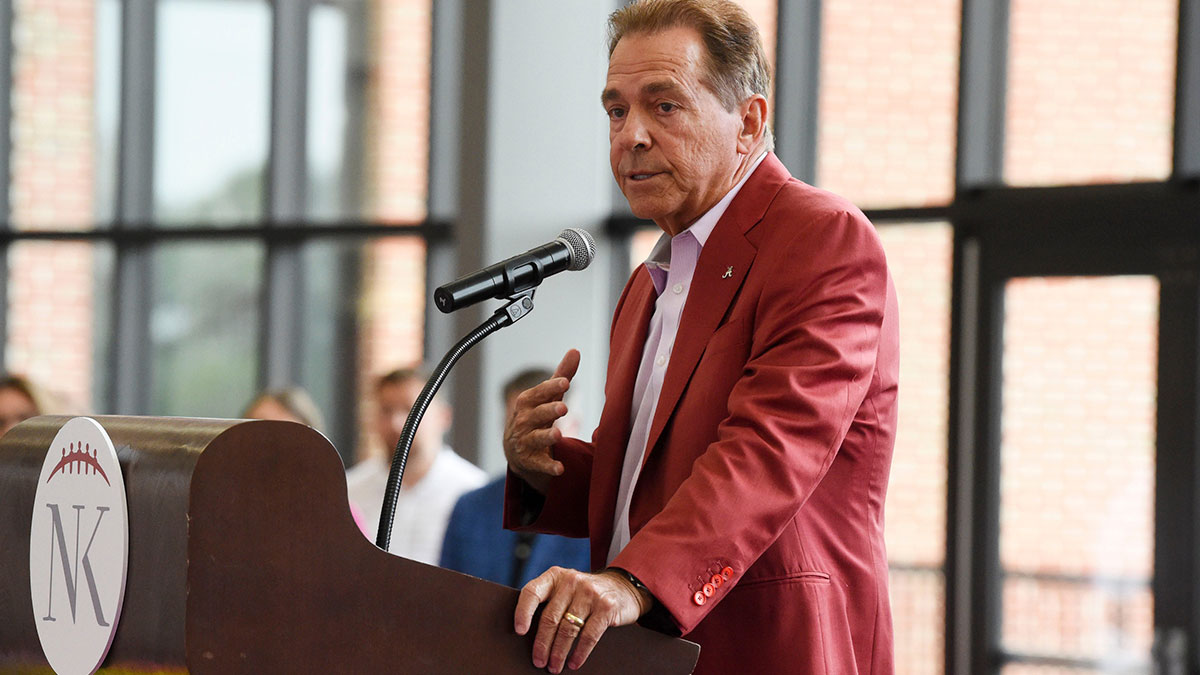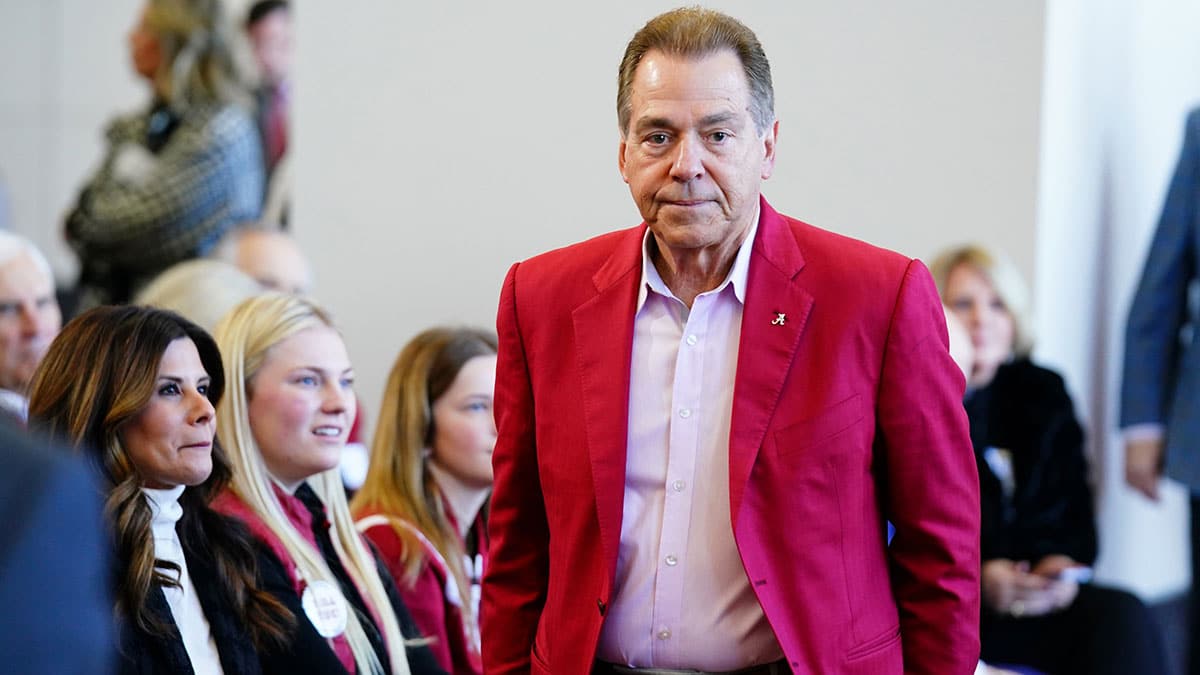Former Alabama football coach Nick Saban blasts possible walk-on removal

Saban laid out several reasons why walk-ons are a vital part of college sports, via The Pat McAfee Show.
“I hate it because those are the kind of guys you want on your team.”
Nick Saban said it’s “not good” for colleges to eliminate walk-on positions in football on the @PatMcAfeeShow ✍️ pic.twitter.com/UbcIWrGsbM
— ESPN College Football (@ESPNCFB) August 30, 2024
“It really is a concern to me because some of the things moving forward that have been presented is that all players be on scholarship and there would be no opportunities for walk-ons. I think that’s not good,” Saban said. “It’s a participation number thing that people are trying to control. But there’s been so many guys who have been walk-ons who got scholarships.”
There are many famous examples of college walk-ons experiencing great success, such as Stetson Bennett at Georgia and Baker Mayfield at Texas Tech. It’s also the plot of “Rudy,” which is one of the most famous sports movies.
The concept of a walk-on starting from the bottom and working their way to the top is the type of story that American culture loves. Robbing college athletics of an inspiring aspect of sports would be a disservice to both the athletes and fans, according to Saban.
“I mean, Rashad Johnson played 10 years in the league and was a walk-on at Alabama for us,” Saban continued. “To not be able to offer those opportunities to guys I think is very unfortunate, and I hate it because those are the kind of guys you want on your team.
“They’re motivated the right way; they’re working hard every day; they’re trying to prove something. Not to be able to give them the opportunity to do that I don’t think is something that’s good for college sports.”
Why does the NCAA want to eliminate walk-ons, other than controlling the number of participants?
Nick Saban is right to be concerned about the NCAA

The main reasoning for the NCAA’s proposal is three-fold, via the Athletic’s Seth Emerson.
“• Cost-cutting: Walk-ons still cost the program some money, whether it’s through travel or equipment, and at some schools, those players get Alston payments. So if the NCAA cuts the football roster size, that’s some money to divert to revenue sharing and other sports.
• Trying to head off litigation: Since lawyers are already suing the NCAA over name, image and likeness; transfers; and seemingly everything else, the scholarship limit could be ripe for the taking. A roster cap would be more defensible because it was done for competitive reasons. (Or so goes the thinking.)
• Teams are exceeding the scholarship limits anyway: Players not on scholarship can receive NIL money to cover all their costs. Some football programs are upfront about using NIL to surpass 85, and it’s easy to imagine some teams in nonrevenue sports are doing the same,” Emerson explained.
With NIL costs now going through the roof, it makes sense why schools would want to cut out extra spending. However, the NCAA must consider the integrity of college sports and the values that they were built upon. Limiting teams to only scholarship players would create an elitist mentality that would only cater to the best high school prospects.
If the proposal did go through, though, it would hardly be a surprise considering recent developments. Between NIL chaos and the dismantling of the PAC-12, the NCAA is going through one of its most drastic periods of change ever.
